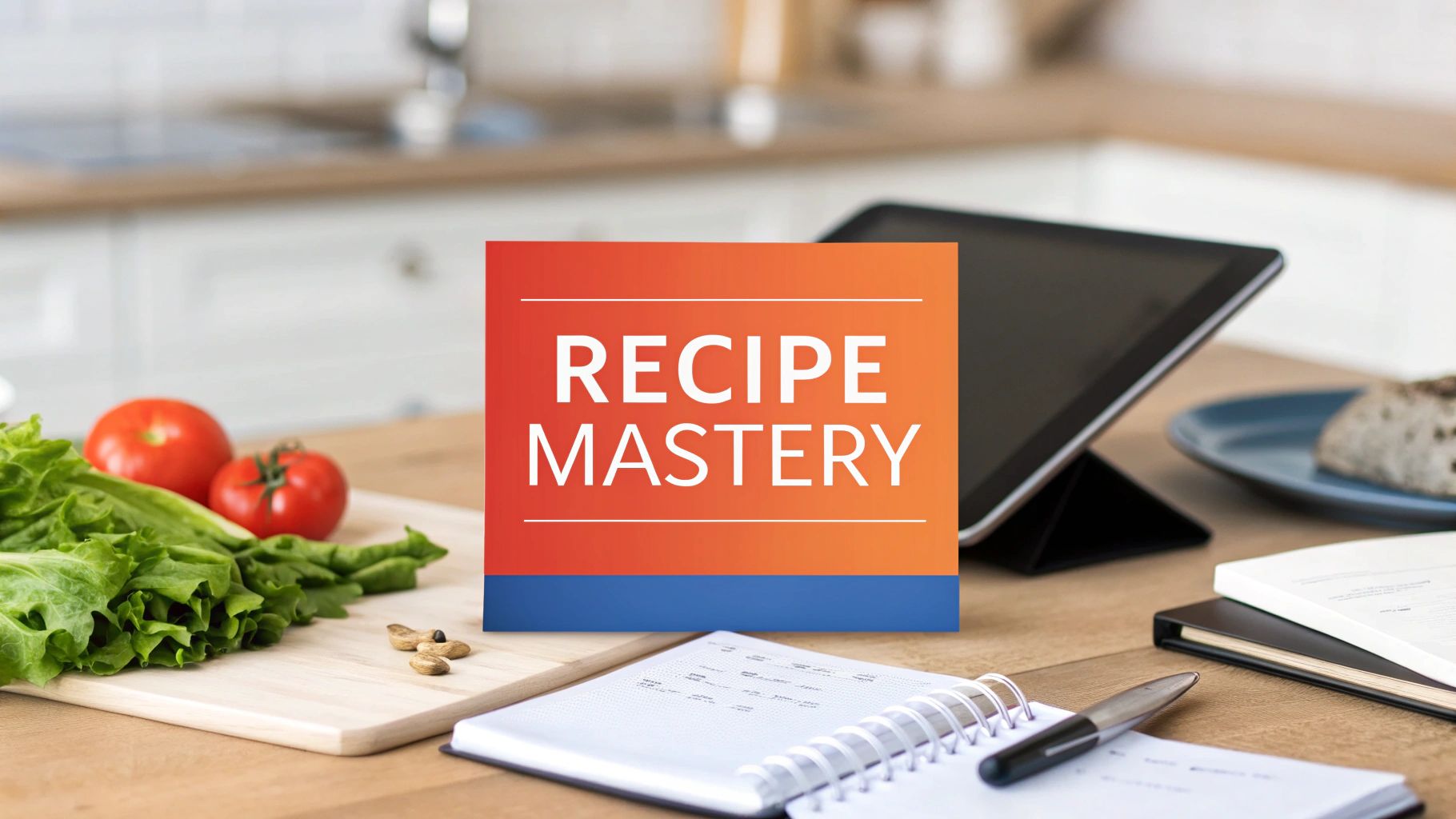Why Brilliant Recipe Organization Transforms Your Cooking Life
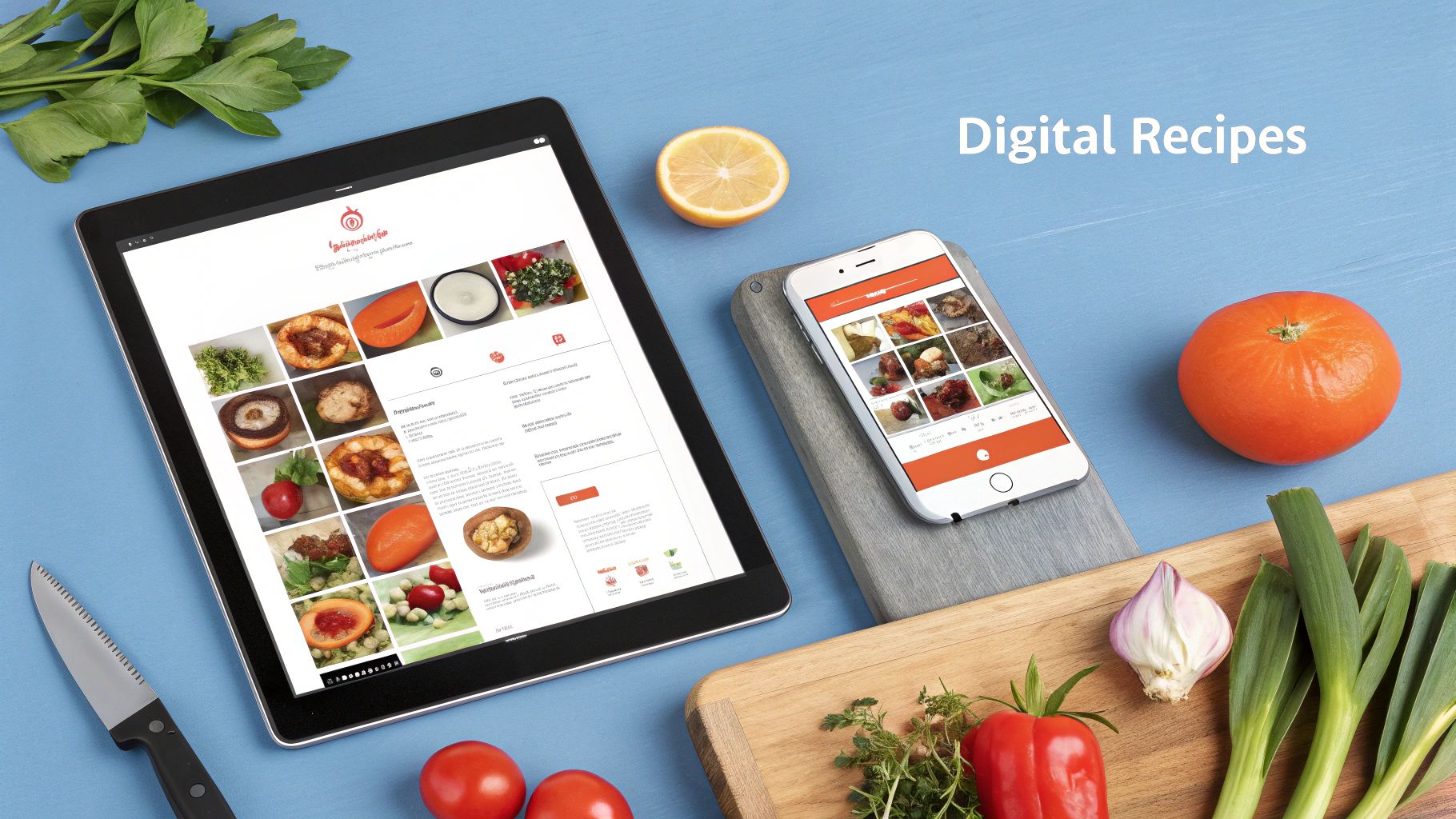
Let's be honest: a disorganized recipe collection can make cooking stressful. Sifting through piles of clippings, overflowing binders, or endless saved links isn't fun. This goes beyond simple neatness; organizing your recipes can truly change how you experience cooking, bringing you confidence and control in the kitchen.
Stress-Free Meal Planning and Preparation
A well-organized recipe system empowers efficient meal planning. Imagine having a categorized collection at your fingertips. This eliminates the hunt for that "special recipe," allowing you to quickly create weekly menus based on your ingredients and time. For example, if you're craving Italian food, you can instantly find all your Italian recipes. This saves time and reduces meal planning stress.
Preserving Culinary Heritage and Family Traditions
Recipes often hold sentimental value, connecting us to family history and memories. Organizing them preserves these culinary traditions for future generations. A good system safeguards these treasures, whether it's your grandmother's handwritten cookie recipe or a dish discovered on a family vacation. This allows you to easily share your family's culinary legacy. Check out our guide on How to Organize Recipes for helpful tips.
Embracing Culinary Exploration and Reducing Food Waste
An organized recipe collection encourages you to try new things. When you can easily see what you have, you're more likely to experiment and use ingredients effectively. This reduces food waste and inspires kitchen creativity. Plus, knowing what you have simplifies grocery shopping and prevents impulse buys. Recipe organization has evolved from paper-based methods to digital platforms like Recify. The global recipe apps market reached approximately USD 5.80 billion in 2024 and is projected to reach USD 6.41 billion in 2025, with a CAGR of 10.52% through 2033. This shows the growing demand for convenient meal planning. Find more statistics here. You might also like: How to Master Meal Planning. Ultimately, a good recipe organization system makes cooking more enjoyable.
Digital Vs. Traditional: Finding Your Perfect Recipe System
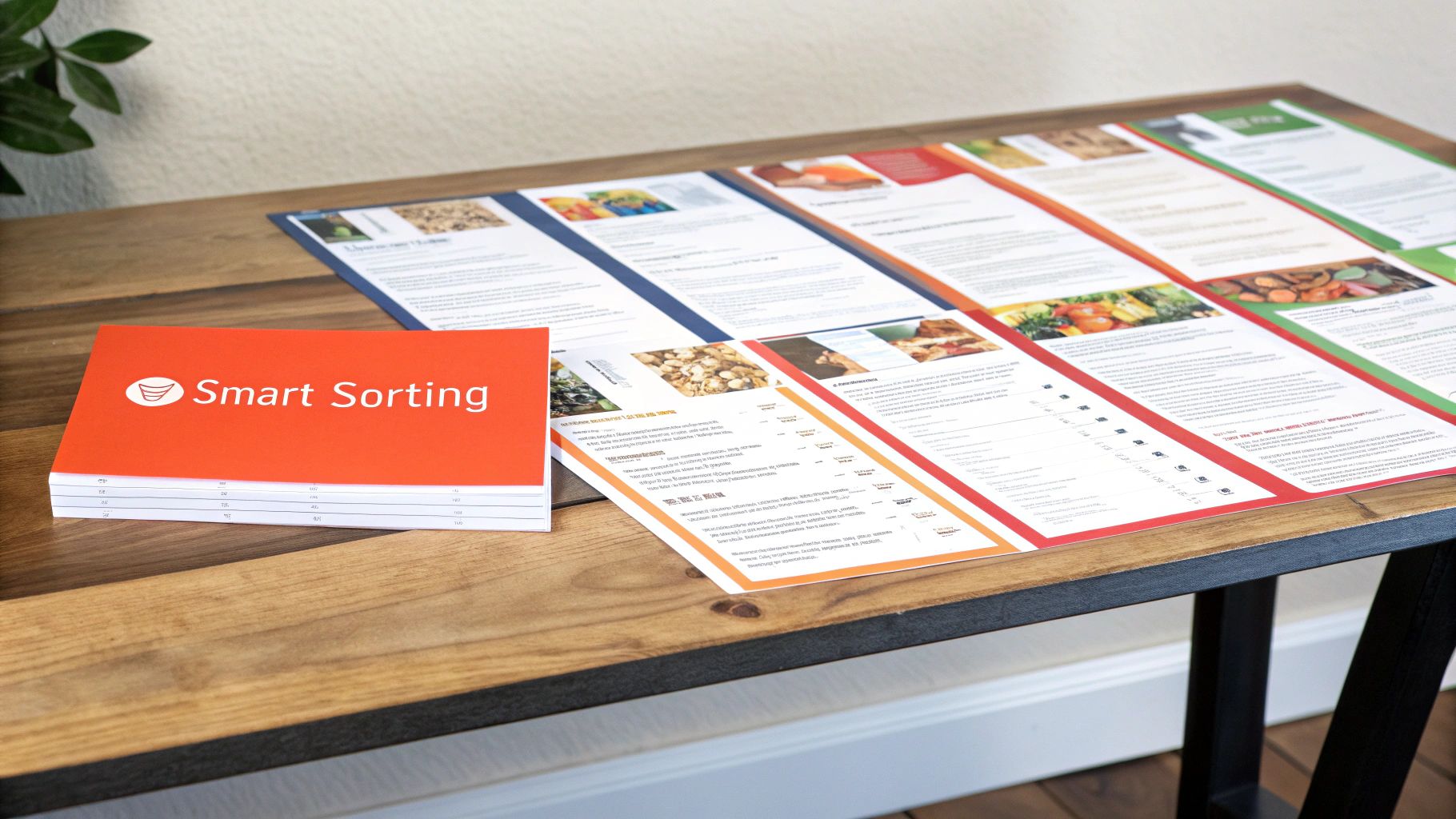
The best way to organize your recipes depends on your personal preferences. Do you enjoy the tactile experience of handwritten notes? Or do you prefer the convenience of digital organization? Understanding the benefits of both traditional and digital systems will help you find the perfect fit for your cooking style.
The Allure of Traditional Methods
Traditional methods, such as handwritten recipe cards or binders, provide a tangible link to family recipes and culinary traditions. Writing down a recipe can be a rewarding experience, helping you remember the steps and personalize the dish. A handwritten recipe card from a loved one becomes a cherished keepsake, filled with memories and a personal touch that a digital version can't replicate.
The Power of Digital Systems
Digital systems offer undeniable advantages for today's busy cooks. Recipe apps and online platforms like Paprika offer robust search functionality, letting you instantly find recipes based on ingredients, dietary restrictions, or cuisine type. Features like ingredient scaling and automatic recipe importing can simplify meal planning. Having your entire recipe collection accessible on your phone or tablet is convenient for cooking at home or on the go.
Let's explore the advantages and disadvantages of each approach in more detail:
To help you visualize the key differences, here's a comparison table:
Traditional vs. Digital Recipe Organization Methods: A detailed comparison of the advantages and disadvantages of traditional physical storage methods versus digital recipe management solutions.
| Organization Method | Advantages | Disadvantages | Best For |
|---|---|---|---|
| Handwritten Cards/Binders | Tangible, personal, reinforces memory, can be passed down | Can be disorganized, easily damaged, difficult to search, takes up physical space | Sentimental recipes, curated collections, those who enjoy handwriting |
| Digital Apps/Platforms | Searchable, scalable ingredients, shareable, cloud backup, access anywhere, importable recipes | Requires technology, can be impersonal, data loss risk (if not backed up), subscription fees (for some apps) | Frequent cooks, tech-savvy individuals, large recipe collections, meal planning |
As shown in the table above, each method has its own set of pros and cons. Choosing the right system depends entirely on your individual needs and preferences.
Finding Your Balance With Hybrid Approaches
Many people find that a hybrid approach works best. This might involve keeping treasured family recipes in a physical format while using a digital system for everyday cooking. This approach combines the nostalgia of handwritten notes with the convenience of digital searching and sharing. For those seeking to improve kitchen organization and minimize food waste, check out helpful meal planning strategies in this article: How to Start Meal Planning. This can further enhance your chosen recipe organization system.
Choosing The Right System and Making It Last
The most effective recipe system is the one you'll consistently use. Consider your cooking habits, comfort level with technology, and emotional connection to your recipes. If you cook often and embrace technology, a digital system might be ideal. If you prefer a curated, personalized collection, a traditional or hybrid approach could be more fulfilling.
Regardless of your chosen method, maintaining your recipe organization system is crucial. Regularly review your collection, removing unused recipes and adding new favorites. This prevents your system from becoming overwhelming and ensures it reflects your current culinary interests. Consistent maintenance will transform your cooking experience from disorganized chaos to effortless control.
Creating Your Perfect Recipe Classification System
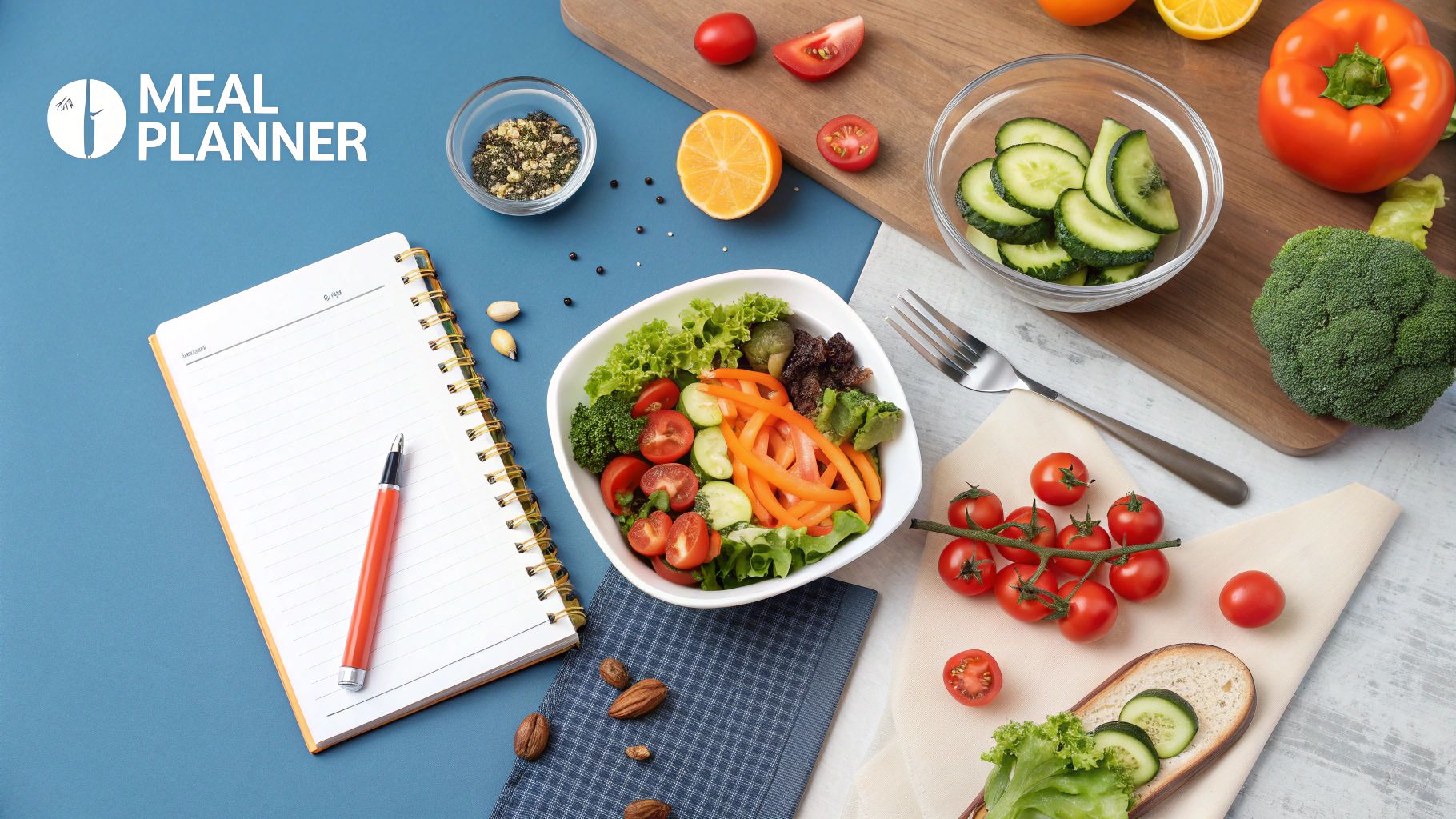
Generic recipe organization systems often don't work well for everyone. Your recipe collection is unique, just like your cooking style. It deserves a personalized classification system. This section explores how to build a system that reflects how you work in the kitchen.
Beyond the Basics: Exploring Different Classification Methods
Traditional categories like "appetizers," "main courses," and "desserts" are a good place to start. But you can go beyond these basics. Create a system that truly reflects your culinary interests.
Here are some ideas to get you started:
- Ingredients: Organize recipes by key ingredients like "chicken," "beef," or "vegetarian." This is especially helpful if you cook based on what you have on hand.
- Cooking Methods: Group recipes by techniques like "grilling," "baking," or "slow cooking." This is perfect if you enjoy experimenting with different cooking styles.
- Cuisine: If you love international flavors, classify recipes by regions such as "Italian," "Mexican," or "Asian."
- Dietary Restrictions: Maintain separate categories for "gluten-free," "vegan," or "low-carb" diets. This makes finding suitable recipes quick and easy.
- Occasions: Create categories for "weeknight meals," "holiday dinners," or "potlucks." This simplifies meal planning for specific events.
- Seasonal Cooking: Organize recipes by "spring," "summer," "fall," and "winter" to take advantage of fresh, seasonal ingredients.
For example, a hearty lentil soup could be tagged under "vegetarian," "soups," "winter," and "weeknight meals." This gives you multiple ways to find it later.
The Power of Tagging and Multiple Categories
Tagging is a powerful tool for recipe organization. It's like adding keywords to your recipes. A single recipe can belong to multiple categories. This makes it easier to find what you're looking for.
This means your creamy tomato pasta could be found whether you’re searching for "vegetarian," "pasta dishes," or "quick meals." This flexibility keeps your recipe collection dynamic and easy to use.
You might be interested in this article: How to categorize recipes.
Visual Organization and Intuitive Navigation
How you visually organize your recipes matters. It impacts how quickly you can find what you need. For physical systems, this could involve color-coded dividers, labeled binders, or index cards.
Digital platforms offer features like folders, tags, and search filters. This makes finding recipes a breeze. The use of artificial intelligence (AI) is also increasing in recipe organization. The market is expected to grow from $571.3 million in 2025 to $1,424.65 million by 2033. This growth highlights the demand for efficient, personalized cooking experiences. Learn more about it here. The goal is to create a system that is both visually appealing and easy to navigate.
Digital Recipe Management: Tools That Actually Deliver
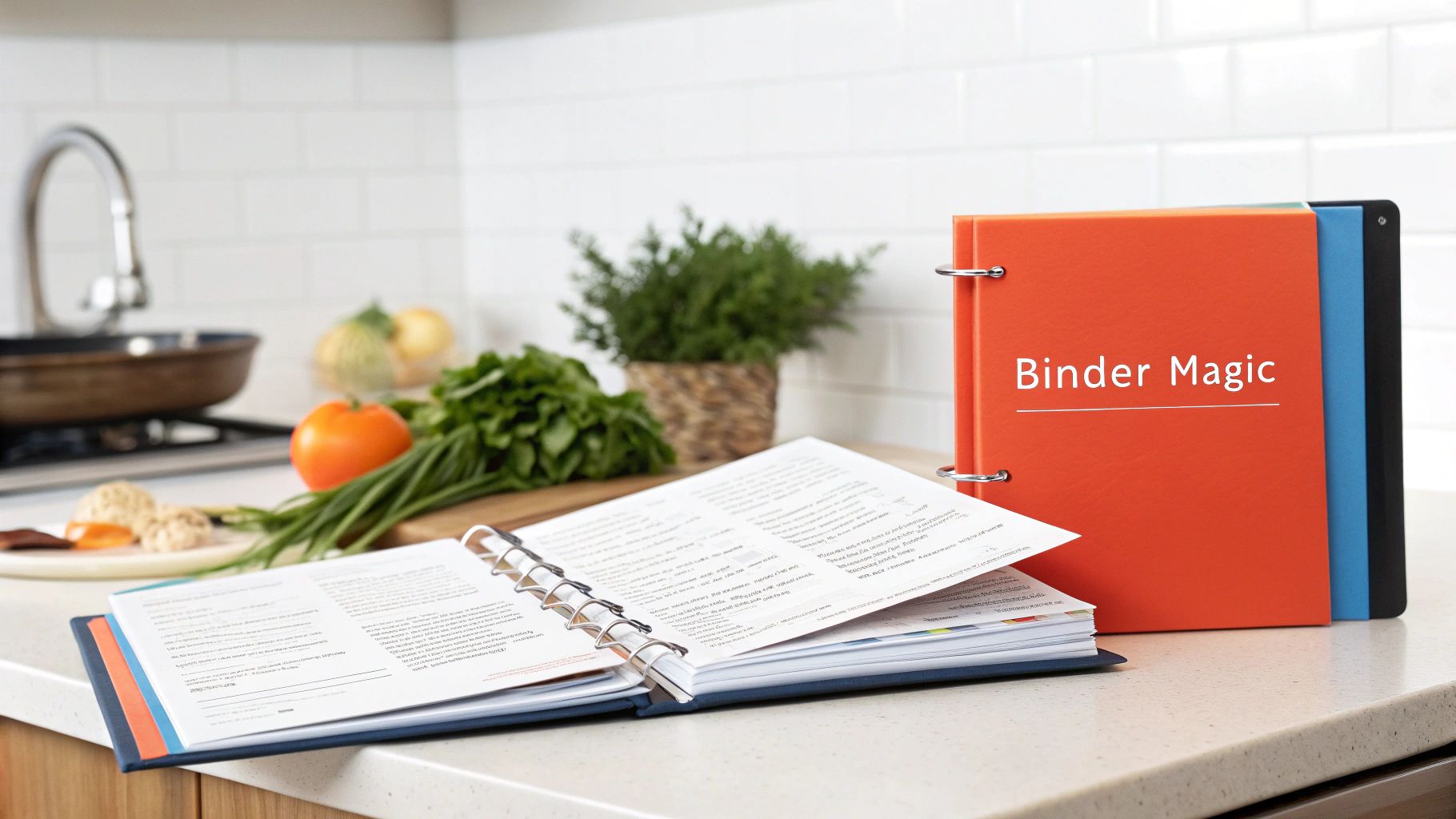
Moving beyond handwritten recipe cards and overflowing binders, digital recipe management offers exciting new possibilities. With so many apps and platforms available, choosing the right tool can make all the difference in your cooking experience. This section explores the essential features that contribute to successful digital recipe organization. For more tips, check out this helpful article: How to master digital recipe organization.
Essential Features for a Smooth Workflow
Effective digital recipe management relies on a few key features. Automatic web recipe importing saves time by seamlessly transferring recipes directly from websites into your digital collection. Tools like Recify specialize in this, eliminating manual copying and pasting.
Another important feature is ingredient scaling. Easily adjusting recipes to fit your needs is a must-have. The best tools allow you to modify serving sizes without complex calculations.
Finally, meal planning integration can be a real game-changer. Platforms that sync with your recipe collection and generate shopping lists simplify weekly meal prep.
Beyond the Bells and Whistles: Features You’ll Actually Use
While some apps offer a lot of fancy features, many are rarely used. Focus on tools that truly improve your workflow. For example, complex recipe analysis might sound appealing, but a clean, intuitive interface and reliable search functionality are often more practical.
Protecting Your Digital Culinary Treasures
Data security and accessibility are crucial when storing your recipes digitally. Think about how your data is handled and stored. A robust backup strategy is also essential, ensuring you never lose your recipes, even if your device malfunctions. Cloud-based storage or regular exporting can help with this.
Navigating the World of Subscriptions: Value vs. Cost
Many recipe management platforms use a subscription model. Carefully weigh the cost against the benefits. Some free options offer excellent features, while others charge for features you might not need. Consider your budget and cooking habits when making a choice. Interestingly, the use of these tools varies regionally. In 2023, North America held over 35.7% of the global Recipe App market, generating USD 238.2 million. You can find more recipe app statistics here.
Real-World Implementation: Avoiding the Unused App Trap
The biggest pitfall of digital recipe management is ending up with another unused app. Successfully integrating a new tool requires intention. Choose a platform that fits your cooking habits and commit to using it regularly. This prevents it from becoming another abandoned project.
To help you choose the right app, we've compiled a comparison of some popular options:
The following table provides a detailed comparison of popular recipe organization applications and their key features.
Top Recipe Organization Apps Comparison:
| App Name | Key Features | Price | User Rating | Best For |
|---|---|---|---|---|
| Recify | Web importing, meal planning | Free, Paid options | 4.5 stars | Importing recipes from the web |
| Paprika 3 | Cross-platform syncing, grocery lists | One-time purchase | 4.0 stars | Cooks who use multiple devices |
| Plan to Eat | Meal planning, drag-and-drop interface | Subscription | 4.2 stars | Organized meal planners |
| Mealime | Personalized meal plans, dietary restrictions | Free, Paid options | 4.7 stars | Users with specific dietary needs |
| BigOven | Massive recipe database, social sharing | Free, Paid options | 3.8 stars | Discovering new recipes |
This table highlights some of the key differences and similarities between these popular recipe organization apps. Choosing the right app depends on your individual needs and preferences. Consider factors like web importing, meal planning features, pricing, and user ratings to find the perfect fit for your digital kitchen.
Tangible Recipe Systems: Beyond Basic Binders
Physical recipe organization offers a satisfying tactile experience, connecting us with culinary traditions. This section explores practical and enjoyable physical systems, from preserving cherished family recipes to techniques used by professional chefs.
Archiving Family Recipes: Protecting Culinary Heritage
Family recipes hold immense sentimental value, acting as a tangible link to past generations. Protecting these culinary treasures requires careful consideration of materials and storage methods. Using archival-quality sheet protectors and acid-free paper helps prevent yellowing and deterioration. Store your precious collection in a cool, dry place, away from direct sunlight.
Creating digital backups by scanning or photographing recipes provides an additional layer of protection against loss or damage. This ensures your family’s culinary legacy remains safe for years to come.
Recipe Cards: Flexible and Fun
Recipe cards offer a flexible and fun system for organizing your growing recipe collection. Using sturdy card stock and a standardized format creates consistency. This makes it easy to find the information you need while cooking.
A standardized format might include sections for ingredients, instructions, cooking time, and serving size. Consider color-coding or using dividers to categorize your collection further, creating a personalized system.
Transforming Magazine Clippings: From Chaos to Collection
Don't let magazine clippings become a disorganized mess! Transform them into usable recipe cards by neatly trimming and pasting them onto card stock. Alternatively, scan clippings and print them onto card stock for a cleaner, more professional look.
Remember to record the source and date of the recipe for future reference. This simple step can save you time and frustration later.
Binder Systems: Level Up Your Organization
Binders provide a structured and efficient way to organize your recipes. Use dividers to create categories and sheet protectors to shield your recipes from inevitable kitchen spills.
A well-organized binder can function as your personalized cookbook, containing all your favorite dishes in one convenient location. Consider adding an index for quick and easy access to specific recipes.
Materials Matter: Withstanding Kitchen Wear and Tear
Choose durable materials that can withstand the realities of a busy kitchen. Waterproof or laminated recipe cards and binders can handle splashes and greasy fingers.
Consider using a stand or easel to display your recipe while cooking, keeping it visible and clean. This frees up counter space and minimizes the risk of spills.
Tactile Organization: Emotional Connections and Simplified Cooking
Physical recipe systems offer a tactile experience that connects us to the joy of cooking. The act of writing down a recipe, flipping through recipe cards, or adding handwritten notes to a cookbook creates a sense of ownership and personalization.
This connection enhances the cooking experience and makes meal preparation more enjoyable. Just like a chef efficiently navigates their station with a well-organized mise en place, a well-organized recipe system sets you up for success in the kitchen. Having your recipes readily accessible simplifies the cooking process and allows you to focus on the creative aspects of preparing a delicious meal.
Building Recipe Organization Habits That Actually Stick
Creating the perfect recipe organization system is a fantastic achievement. But the real work begins when you have to maintain it and adapt it as your cooking style evolves. This section explores how to avoid the common pitfall of abandoned organization projects by building sustainable habits.
The Psychology of Recipe Organization Habits
The key to maintaining any organizational system, including your recipes, is establishing solid habits. This starts with understanding how habits form. One effective method is to connect recipe organization to an existing habit. For example, if you already plan your weekly meals on Sunday evenings, integrate a quick review and update of your recipe collection into that routine.
Another useful technique is to create trigger-based systems. This might involve adding a new recipe to your collection immediately after you try it, or clipping a recipe from a magazine the moment you see it. These triggers turn recipe organization from a chore into an automatic action.
Regular Recipe Evaluation: Keeping Your Collection Relevant
Regularly evaluating your recipe collection is crucial for ensuring it remains relevant to your current preferences and needs. Just like cleaning out your closet, purging unused or outdated recipes prevents your system from becoming overwhelming. Consider factors such as dietary changes, ingredient availability, and how often you cook. For instance, if you’ve embraced a plant-based diet, those old meat-heavy recipes might need to be removed or relocated.
Maintenance Schedules: Digital vs. Physical
Different organization systems require different maintenance strategies. Digital collections may benefit from a monthly review to confirm links are active, tags are accurate, and the system is running smoothly. Physical systems, such as recipe binders or boxes, might need a quarterly or semi-annual cleaning to remove duplicates, fix torn pages, and reorganize as needed. The most important thing is to create a realistic schedule you can maintain.
Family Involvement: Sharing and Preserving Culinary Traditions
Including family in your recipe organization can be a wonderful way to share and preserve culinary traditions. Encourage loved ones to contribute their favorite recipes or share stories connected to specific dishes. This collaborative approach transforms recipe organization from a solo task into a shared family activity. It also helps ensure cherished family recipes are saved for generations to come.
Documenting Your Cooking Journey: More Than Just Recipes
Recipe organization can also document your personal cooking journey. Adding notes to recipes—such as the date you tried them, modifications you made, or who you shared them with—turns your collection into a culinary diary. This allows you to monitor your progress, rediscover old favorites, and reflect on how your tastes have changed.
By using these strategies, you can shift recipe organization from a tedious task to a fulfilling reflection of your evolving culinary identity. It becomes a way to celebrate your passion for cooking, connect with family and friends, and preserve your culinary heritage.
Ready to experience stress-free recipe organization? Recify, a recipe management app, lets you easily save and organize your favorite recipes from anywhere. Turn your phone into your personalized cookbook with Recify. Learn more and download Recify today!
